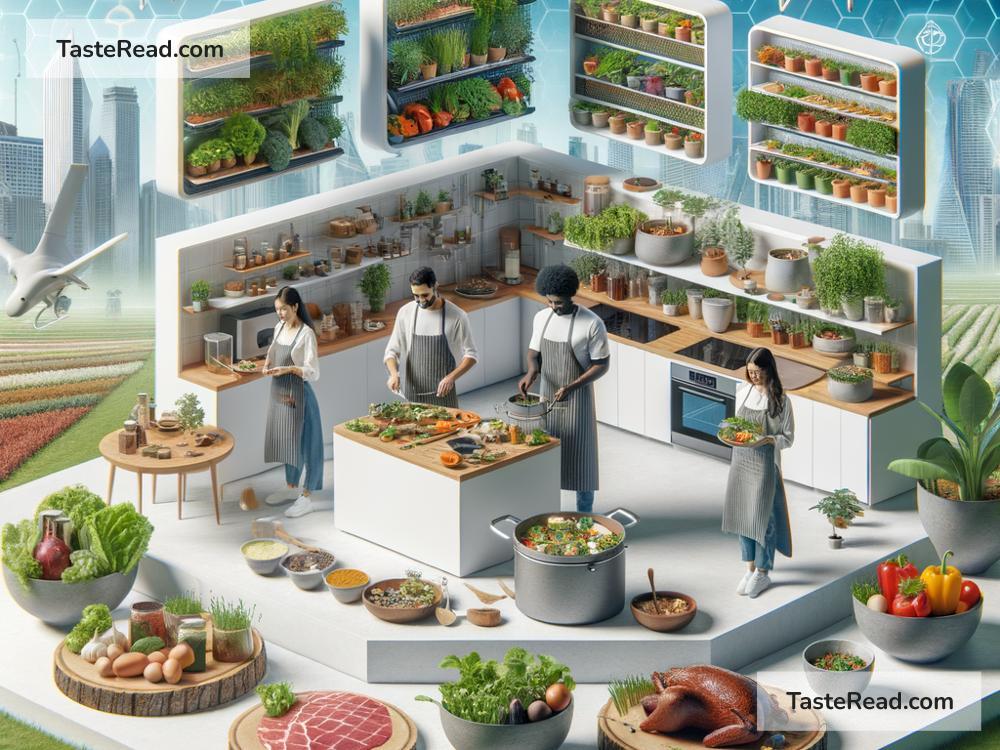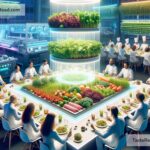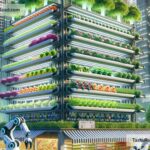The Future of Food and the Power of Global Collaboration
What will the future of food look like? What challenges will humanity need to overcome to feed billions of people in the coming decades? These are big questions we can’t ignore. With growing populations, climate change, and technological advancements reshaping the way food is produced and consumed, global collaboration is becoming essential.
The Current State of Food Systems
Today, our food systems are under pressure. With nearly 8 billion people now inhabiting the planet, the demand for sustainable food sources is skyrocketing. At the same time, we face serious problems. Climate change is leading to more droughts, floods, and extreme weather, making it harder for farmers to grow crops. Soil degradation, deforestation, and water shortages are also harming agriculture.
Meanwhile, 800 million people worldwide go hungry every day, even though food waste remains a massive issue, with about one-third of all food produced being thrown away. On the other side of the spectrum, unhealthy eating habits and easy access to highly processed foods are fueling global obesity rates and diseases like diabetes.
The future of food must address all these interconnected problems. But no single country or company can solve them alone. A new age of collaboration is needed—one where governments, businesses, scientists, farmers, and international organizations work together to create sustainable solutions.
New Technologies Shaping Food
Technology is rapidly transforming food production, offering hope for a brighter future. Innovations like vertical farming, lab-grown meat, and precision agriculture are changing the way we think about farming and food supply.
-
Vertical Farming: With less and less fertile land available, vertical farming uses indoor spaces to grow crops in stacked layers, using LED lighting and controlled temperatures. These farms can be built in urban areas, reducing transportation costs and emissions.
-
Lab-Grown Meat: Lab-grown or “cultured” meat offers an alternative to traditional livestock farming, which consumes large amounts of land, water, and energy. These products are created by growing muscle cells in labs, offering a way to produce meat without harming animals or the planet.
-
Precision Agriculture: Farmers are now using drones and artificial intelligence to monitor soil health, predict weather patterns, and apply fertilizers more efficiently. This helps reduce waste and boosts crop yields.
Other technologies, like gene editing (CRISPR) and plant-based proteins, are pushing the boundaries of what we can achieve. However, these solutions need to be adopted responsibly, ensuring they benefit all communities, not just the wealthiest countries.
The Role of Global Collaboration
No nation can tackle food security alone. Problems like hunger, climate change, and resource shortages are global in nature. Solutions must be equally global—and that requires teamwork across borders.
-
Sharing Knowledge: Countries with advanced food technologies can share their expertise with regions that lack resources. For instance, drought-resistant crops developed in one country could help farmers in dry, food-insecure regions.
-
Investment in Infrastructure: Wealthier nations and organizations can invest in infrastructure for developing countries—such as better irrigation systems, transportation networks, and storage facilities—to reduce food loss and improve distribution.
-
Creating Fair Trade Policies: Governments need to ensure fair trade agreements that help small farmers earn a fair living and access international markets without exploitation. This would create a balanced global food economy.
-
Combating Food Waste: International collaboration is also key to reducing food waste. Efforts to improve logistics, refrigeration, and storage can prevent food spoilage. Education campaigns can help consumers waste less food, too.
-
Climate Action: The global fight against climate change directly impacts food sustainability. Governments must work together to adopt renewable energy, reduce carbon emissions, and protect ecosystems. Agriculture policies will need to prioritize both environmental health and food production.
How Everyday People Can Get Involved
While systemic collaboration is critical, individuals also have a role to play. Every person can make choices that move us toward a more sustainable food future.
-
Eat Sustainably: Choosing sustainable foods, like plant-based meals or locally sourced produce, can reduce your environmental footprint.
-
Reduce Waste: Buying only what you need and storing food correctly can prevent unnecessary waste in your home.
-
Support Ethical Brands: Supporting companies that prioritize environmental-friendly farming and fair labor practices helps create demand for better food systems.
-
Advocate for Change: Use your voice to push for local policies or programs that help address food insecurity or environmental issues.
The Big Picture
Feeding the world in the future will be a daunting challenge. But it’s also an opportunity. By combining cutting-edge technology with the power of global collaboration, we can create food systems that are not only sustainable but also equitable.
Imagine a world where no one goes hungry, where farmers thrive, and where food production helps heal the planet rather than harm it. That vision is within reach—but only if we work together. Whether it’s governments joining forces, businesses innovating responsibly, or individuals making smarter choices, every effort counts.
The future of food is about more than just survival. It’s about building a healthier, fairer, and more sustainable world for everyone. Let’s take the next steps together.


